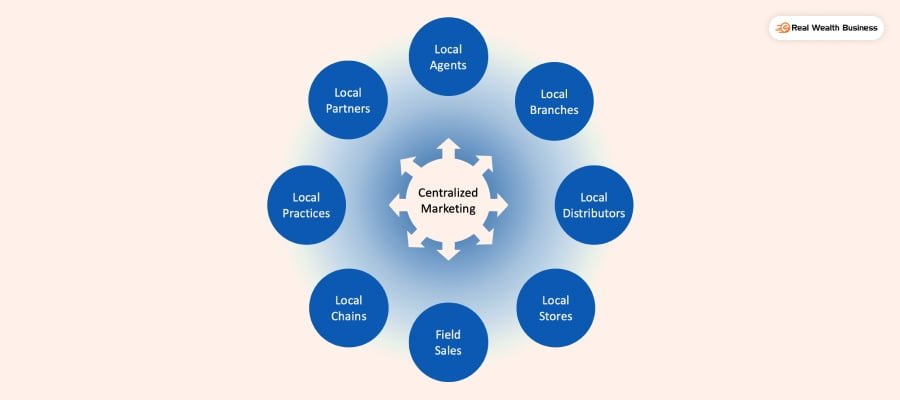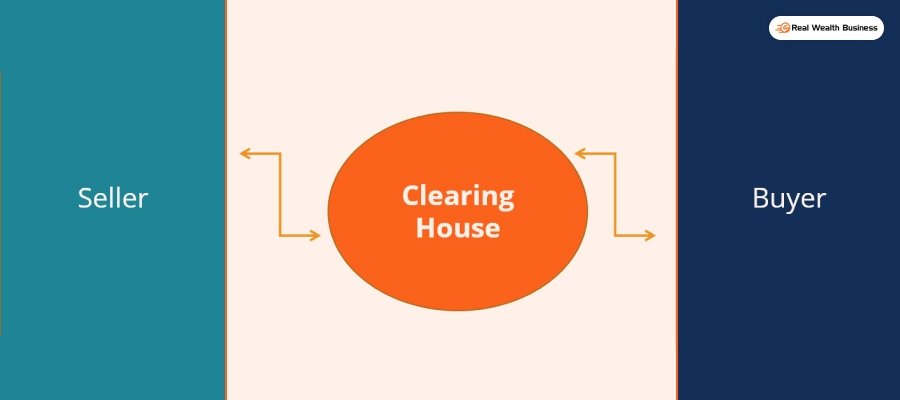What Is A Centralized Market?
by Ankita Tripathy Marketing 30 May 2022

All of us have heard the term market since our childhood. It is a place where the buyers and the sellers meet to exchange the value (money) for vegetables or other commodities. However, when it comes to the economy, the market is not just the place where people meet to buy vegetables.
A market is a place where people come in contact with one another directly or indirectly through an agent to exchange assets and values.
The economic market is one of the most important structures for the financial growth of a country. This is because the buyers and sellers meet here to exchange the services and other valuables.
There are many types of financial or economic market structures. The centralized market is one such type of financial market. Want to know more about the Centralized Market? Keep reading till the end…
Centralized Market

When there is no other competing market in the scenario, and all the orders are routed to only one central body of exchange, it is called a centralized market.
It is a system of the financial market where all the orders are directed to only one market. This central exchange of all orders for buying and selling has no other competing market. This also means that the money that the sellers offer is final.
The investors who wish to buy a particular asset have to buy it from the central market at the fixed quoted price.
This also means that the pricing in such a market is completely transparent, and everybody who wants to purchase the assets can see it. These are regulated markets. This means that the regulation of the market is managed by the government.
The centralized market is great for the stockholders. This is because these markets lack competition and the prediction of the price movement becomes much easier.
In simpler words, the centralized market is a regulated market structure over which the government exerts a certain control. There is only one market and no other competing markets, which makes the price of the financial assets transparent.
Read More: The Administration Process: A Guide For Businesses
Key points: 1. The centralized market is a market without any competition 2. It is a regulated market structure where the decision are taken by a central body 3. The price of the assets are fixed and the investors who are willing to buy them have to pay the fixed price
Features Of A Centralized Market
From what we have discussed above, the centralized market is a market system where everything is regulated by the government, and there is transparency when it comes to prices.
There are other features of the centralized market that set it apart from other market structures. Some of the features are mentioned below:
1. The Clearinghouse

This acts as the intermediary body that sits between the buyer and seller to validate and finalize the transactions. The main function of the clearinghouse is to make sure that the integrity of the exchange or transaction is maintained by both parties.
2. Authority

The authority of the centralized market is fixed and is handled by the centralized body that is solely responsible for the exchanges in the market.
Whatever happens in the market is controlled by the centralized body. This makes the formulation of decisions very straight forward. This feature ultimately leads to the smooth and uniform functioning of the market.
3. Inflexible

In a centralized market structure, the management of the economy is centrally controlled by the fixed body. This makes it impossible for the lower levels to make changes.
When it comes to the market, there is very little scope to change. This is because the power to make decisions totally rests on that particular body.
You May Like To Read This: 3 HR Tips to Manage Remote Teams Effectively
4. Transparency

Because there is no other market that acts as a competition to the centralized market, it makes it possible for the market to quote the price in a straight forward manner.
This also means that the people or buyers and investors who are willing to buy a particular financial or physical asset are able to see the price.
The key features of the centralized market are: 1. Clearinghouse 2. Authority 3. Inflexible 4. Transparency
Frequently Asked Questions (FAQs):
Similar to the market, the money can also be centralized. When the money is centralized, it means that a parent company operates the fund, and it is then transferred to the subsidiaries.
This transfer of money starts at the beginning of the day. The money is also transferred back to the parent company at the end of the day by the operating subsidiaries.
Even though the stock market is also a very important part of the country’s economy, the buying and selling of the stocks are not included in the centralized market.
The main reason for that is that there are many stock markets around the world. These stock markets are not dependent on each other. Rather, the stock market is completely an independent body where the buyers and sellers of stocks and shares meet to exchange.
The interbank market is not a centralized market. Rather, this market is decentralized and unregulated. These markets deal with one another either through direct exchange of money or through EBS or Electronic Broking Services.
Wrapping It Up!
Similar to the centralized house or family where all the decisions are taken by a single family member, either the father or the mother, the centralized market works in a similar way.
The centralized market is a regulated market structure where all the exchanges are directed towards a central market. The key feature of such a market structure is that there is a long time to make decisions as only a single body has the authority to make decisions and other changes.
There is also transparency when it comes to price. The price of the assets that are to be exchanged is visible to the buyers or investors. However, the value is fixed, and the investors have to choose to invest or buy the asset for the available price.
Read Also:







































































































